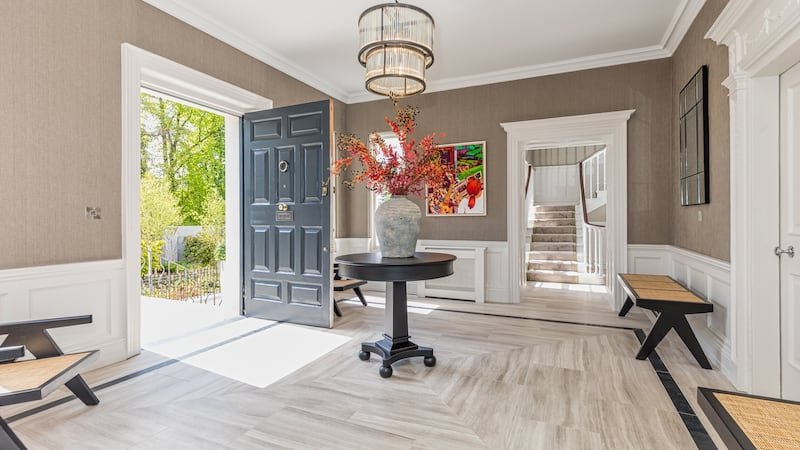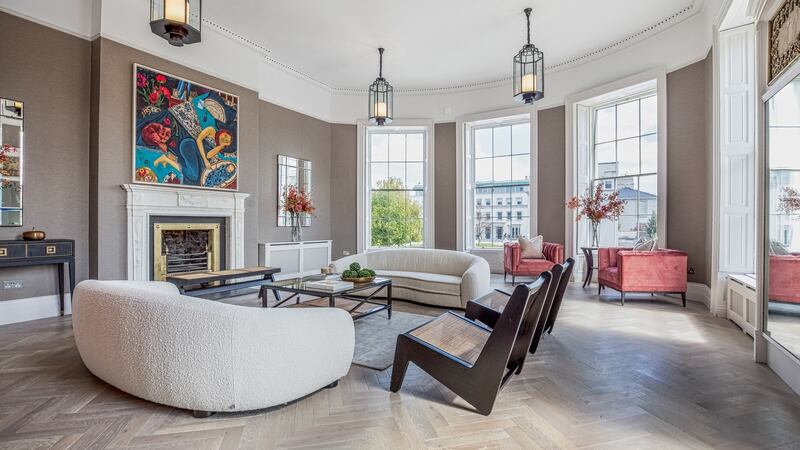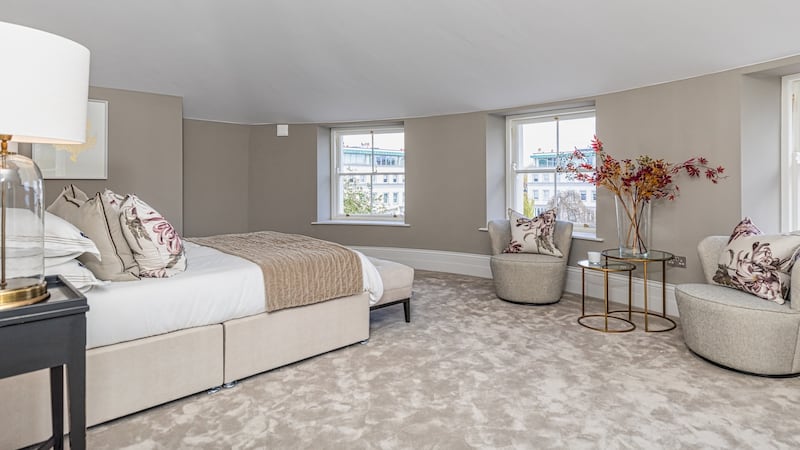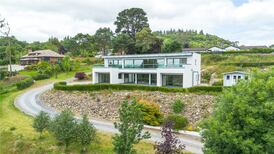Since it was built in about 1790 for the prominent barrister, MP and future attorney general William Saurin, Bloomfield House in Donnybrook has witnessed much history. In 1802, Saurin sold it to state physician Dr Robert Emmet, whose youngest son and namesake was executed for high treason following his failed 1803 rebellion.
In 1809 the Emmet family sold it to the Religious Society of Friends (Quakers), who extended the building and ran it as a hospital for almost two centuries. It was bought by Galway developer Gerry Barrett whose Edward Holdings built luxury Regency-style homes around a quarter-acre communal garden at Edward Square; these look as fresh as when they were launched in 2004.
Later, the focus moved across the site to the hospital, and the Edward Lane apartments were built in 2007 after the Quakers had moved. In the recent past, the wings of the main house were carefully converted into apartments, Northfield and Westfield, of which a few remain for sale through agent Owen Reilly.


In 2017 Edward Holdings began the restoration of the central part of the listed house, by Paul Tyndall Architecture and Design with conservation architect Robin Mandal. Meticulous work included repairing windows, some of which retain original glass; repairing ceilings and covings with lime plaster; re-roofing with natural slate; and restoring two massive marble fireplaces at a cost of €60,000. Other necessary but now invisible projects included rewiring, replumbing, underpinning and damp-proofing.
The house, with 414sq m (4,456sq ft) is on Bloomfield Avenue, a cul-de-sac off Morehampton Road that leads to the Royal Hospital Donnybrook. Through security gates and up granite steps, the heavy front door opens into a gracious square hall lit by four windows. The doors and their wooden surrounds are deep and solid, and the rooms on this level are floored in herringbone parquet.


To the left swoops the airy staircase and to the right is the highlight of the house, a breathtakingly-beautiful ballroom added by the Emmets. It features three windows in the bay at the far end, a decorative panel over a mirror between the two front windows and, opposite, the first of those fireplaces; this one is white with classical motifs in relief. Furnished in an understated way for the viewings by The Interiors Project, its opulence is not overwhelming.
Straight ahead off the hall is a dining room with two tall windows and a glass door to a shallow, cantilevered terrace offering views over a communal courtyard; the marble fireplace has inlaid flower patterns of semiprecious stone. Next to this is a smaller, cosy study.
Up the stairs, which wrap around three sides of a square, the bedroom ceilings are rather lower than those downstairs. To the left are two big bedrooms, one with three windows and a bathroom en suite, and the other with a slightly unusual shape. To the right is a smaller room that could be a nursery, an office or perhaps a dressing room. These share a big white bathroom.
The main bedroom, up steps, has an office setup to the right and a large bathroom to the left. The bedroom itself has the same three-window bay as the ballroom below and is spacious enough for a big bed and two armchairs, though new owners will have to add storage.
Plainer stairs lead down from the hall to the garden level, which has a bathroom and an adjacent bedroom. Here the hallway opens to the vast kitchen area, which has a wooden floor and a first fix of electrics but the fitout will be entirely up to new owners. With three glass doors to the outside, there is flexibility for cooking, dining and lounging but any grown-up entertaining will surely focus on the livingroom upstairs.
As for buyers, agent Owen Reilly says it is bound to appeal to people looking at penthouses or large apartments in the area who want a lot of living space but are not fussed about having their own garden when there are lots of lovely communal spaces. The price is €2 million and the annual management fee is €4,196, which includes two designated spaces in the basement car park.











